Japanese mushrooms come in many types, from the popular “high-class” shiitake, to hotpot regulars enoki, cute brown capped namekos, and more. Mushrooms are a huge part of the Japanese diet, incorporated into soups, standalone dishes, side dishes, and even pub snacks. This healthy vegetable is a must-eat in Japan.
Table of Contents
Why Mushrooms?
As we all know, mushrooms are a type of fungus that need other plants and organisms for nutrients (theft!). Wild mushrooms grow on logs, dying trees, branches, and places where it can leech off other organic material.
Edible mushrooms are rich in Vitamin B and cholesterol-free, making them popular in healthy Japanese diets. They also contain antioxidants and potassium. Japan has thousands of varieties of mushrooms but not all of them are edible (we all know the horror stories of poisonous mushrooms). The Japanese have incorporated mushrooms in their diet since a long time ago, but mushroom cultivation only started around the 1600s. The most well known Japanese mushroom is Shiitake which has been widely exported around the world since the 1980s.
※ Kikkoman Corporation, "Japanese Mushrooms" ※ Encyclopaedia Britannica, “mushroom”

Japan practices two methods of mushroom cultivation: log and sawdust. Log cultivation, as you can imagine, is growing mushrooms on logs. Shiitake is predominantly grown through log cultivation, though it does take a long time. It is possible to cultivate mushrooms yourself. There are even mushroom cultivation kits you can buy to experience being a mushroom farmer.
Writer's Pick
Learn About The Types of Japanese Mushrooms
There are around 100 edible mushroom types in Japan. These are the most popular and widely available in supermarkets:
Shiitake 椎茸
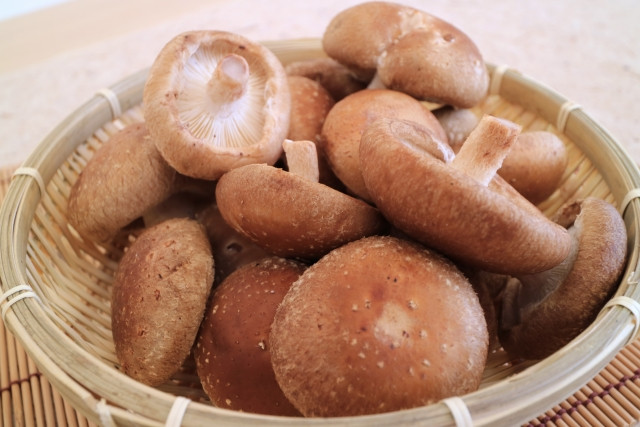
In answer to the question, “Is Japanese Shiitake superior to others?” Michelin Guide has only one answer, and that is “Yes”. When it comes to dried shiitake, they claim that Japanese ranks number one, followed by Korea and China.
Shiitake mushrooms are available in two forms in Japan, fresh and dried. Dried shiitake needs to be rehydrated before cooking - at least 30-mins or overnight. The soaking liquid can be used to give flavour to broth after filtering for impurities - so don’t throw it out! Dried shiitake is excellent for stews and simmered dishes, giving it a strong oomph.
Fresh shiitake goes well with everything. Stand alone stir fry, mushroom risotto, miso soup, nabe; it complements any dish. Different grades of Shiitake are suitable for different dishes - smaller and squisher, or bigger and chewier, stronger kick or light flavouring, you can experiment with different Shiitake recipes.
※ Michelin Guide, “Ask the Expert: Hunting For The Best Dried Shiitake Mushrooms”
Matsutake 松茸
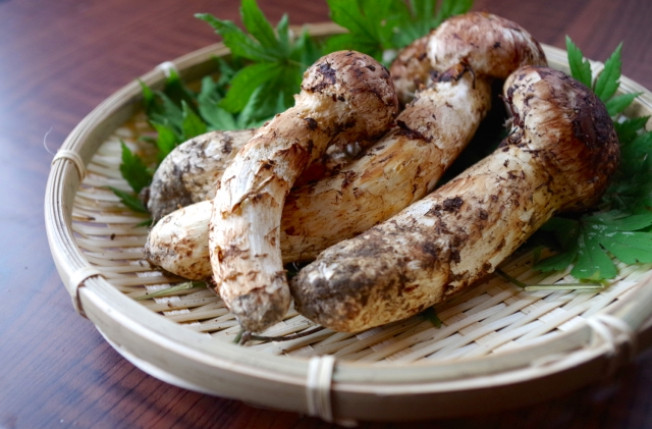
If you thought Shiitake was expensive, meet Matsutake, a prominent icon of Japanese flavour. They are primarily grown on red pine trees and renowned for its distinct intense spicy aroma - not for everyone.
They are considered a delicacy, or gourmet ingredient, costing a bomb. Just recently in September, 70 grams of 3 matsutake mushrooms were sold at an auction for a whopping amount of 830,000 yen, as reported by the Mainichi. Perhaps it’s extraordinary cost can be attributed to its status of “vulnerability” by the IUCN Red List, a resource for the risk of plant and animal extinction. The reason? A lack of red pine forests due to devastation by disease, which is where Matsutake thrives.
Matsutake is consumed in a similar manner to truffles: grated or peeled as garnish over a dish. Other ways to prepare are lightly seasoned than oven toasted, matsutake rice, stews, soups, grilled, and more.
※ The Mainichi, “70g of matsutake mushrooms fetch $7,600 in 1st auction of season at west Japan market” “Japanese delicacy matsutake mushrooms added to IUCN Red List of at-risk species” ※ IUCN Red List, “Matsutake”
Shimeji しめじ
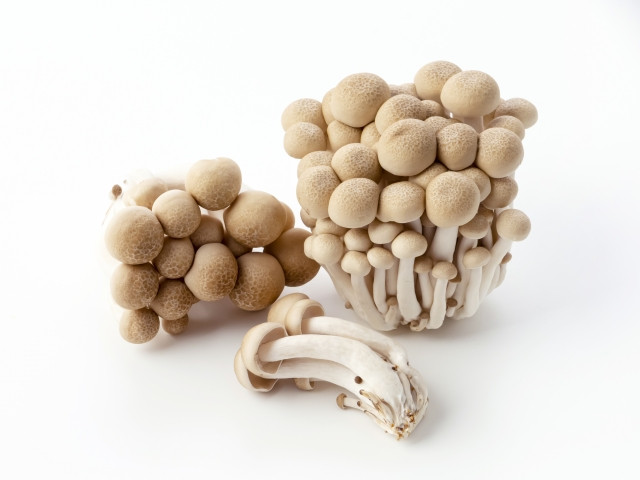
Shimeji are small light brown capped mushrooms clustered together at the base. They are a common sight in supermarkets and cheap. Shimeji are a great source of potassium, different types of vitamin B, and are cholesterol and sodium free with low calorie count. Its firm texture and chewy bite adds texture to dishes. They are ideal for fish dishes, soup, and stir-fries (shimeji pasta dishes are popular in autumn!).
Nameko なめこ
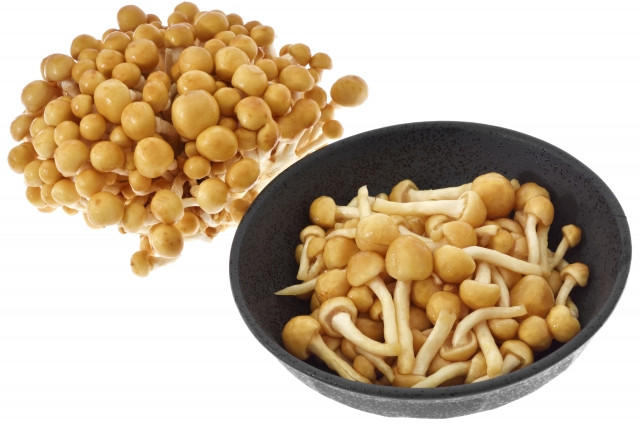
Nameko are tiny mushrooms with brown almost orange coloured heads. Actually, they look like a bunch of little oranges on sticks. What makes them stand out from the other Japanese mushrooms are their shiny looking heads. This is caused by a gelatinous layer that makes the Nameko great in soups, especially miso.
Nameko was the inspiration for the “Mushroom Garden” series mobile game. The game features a nameko called Funghi whom you will help with his mushroom cultivation business. Funghi’s name is Nameko in the Japanese version and the game is also called “Nameko Cultivation Kit なめこ栽培キット” and not “Mushroom Garden”. There are also other games in the series if you’re interested, including a Switch game. Check the link below for more information.
※ Funghi Paradise (Nameko Paradise)
Maitake 舞茸
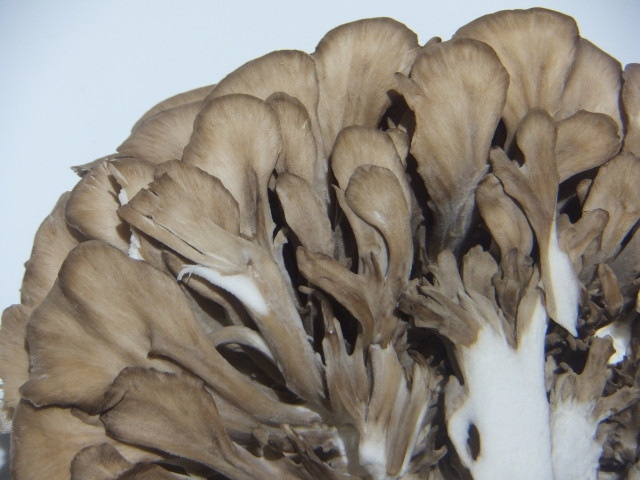
Maitake has a flowery like appearance with fluttery curly caps over short stalks, kind of like a brown coral. It has a mild to strong flavour with plenty of earthiness and nuttines. The texture is soft and gentle like its appearance making it great for tempura and stir-fries. Prepping Maitake is easy as you can simply tear off their “petals” all the way down to the base.
Enoki えのき
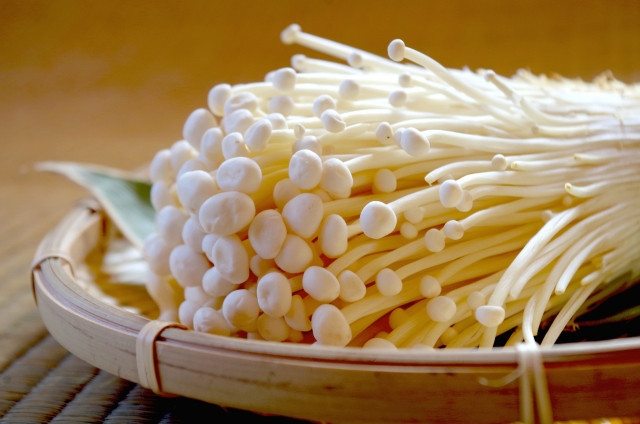
Also popular in Chinese and Korean cuisine, enoki is more stalk than anything else. A bunch of enoki has an average stalk length of 5cm (can go up to 8cm) with a small button cap. They are always available in supermarkets and quite cheap at around 88 yen excluding tax. Enoki is essential when having hotpot, especially sukiyaki.
Eringi エリンギ
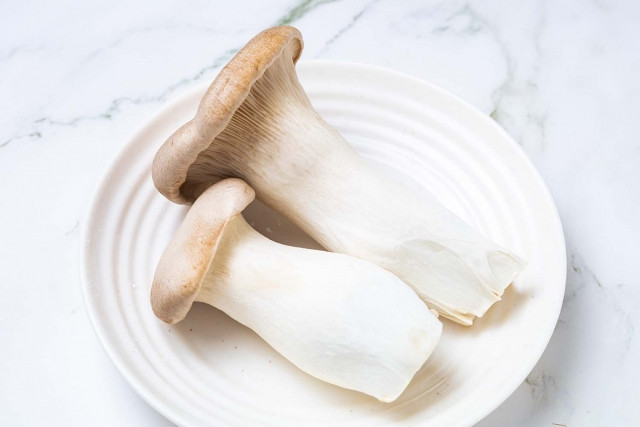
Eringi goes by many names in the Western world, also known as King Trumpet Mushroom, Oyster Mushroom, and more. It is a fat and thick mushroom with lots of bite to it. The thick meaty stalk is white, whilst its flat small surface area cap is a light shade of brown almost grey colour. It doesn’t have much taste or smell which makes it go really well with sauces. Lightly seasoned with soy sauce and grilled is a great way to start. They are also frequently used in meatless vegetarian stir-fries.
Mushroom Restaurants in Tokyo
All this mushroom “talk” makes us crave for a hearty mushroom meal. Just my luck, Tokyo is home to several mushroom specialty restaurants. And just your luck, we’re going to introduce them to you.
Mushroom Tokyo
Just a 2-minute walk from Tokyo Metro Station Meiji Jingumae Station is Mushroom Tokyo. In case their name isn’t obvious enough, they specialize in mushroom dishes. They have another branch in Himeji, Hyogo Prefecture. All their dishes are made with locally produced mushrooms, such as their specialty “mushroom pasta” kneaded with mushroom powder. They also have an online store selling original mushroom products like mushroom seasoning, curry, mushroom recipe books, dishware, and more.
Ebisu Mushroom
A French restaurant serving exquisite seasonal dishes and rare mushrooms in a cozy bistro setting, Ebisu Mushroom is located between Ebisu and Daikanyama. It takes a 3-minute walk from Ebisu Station, or 6 minutes from Daikanyama Station. The restaurant is decorated with all sorts of mushroom shaped ornaments. It’s considered a course meal restaurant, including omakase courses, so expect to spend quite a bit. Lunch plans start from 2,750 yen, whilst dinner starts from 6,050 yen.
Kinoko
A place to unwind with friends or co-workers in a glass of beer and healthy mushroom snacks is Kinoko. Check the link for their menu and prices. It’s a cheap to reasonably priced mushroom specialty Izakaya. Kinoko is one of several shops in Ebisu Yokocho, a hub where several izakayas gather. You can have a go at Kinoko then try out the other places. A nightlife area, this place opens from 5pm to 5am. It is also conveniently located 2 minutes away from Ebisu Station.
※ Go Tokyo, “Ebisu Yokocho”
Takeaway

Mushrooms are a great source of healthy vitamins and good for health. With 0 calories, it is also a great help to lose weight. The best thing yet is how delicious and cheap (most of them) they are. There are plenty of easy Japanese mushroom recipes even for those that lack cooking skills. Worse comes to worse, just season them a little and cook them in the microwave. Steamed mushrooms dipped in soy sauce is also another easy recipe to try. Mushrooms are a forgiving ingredient so everyone can eat healthy and happy. And if you’re in Japan, definitely give mushroom dishes a try, especially in autumn!

































